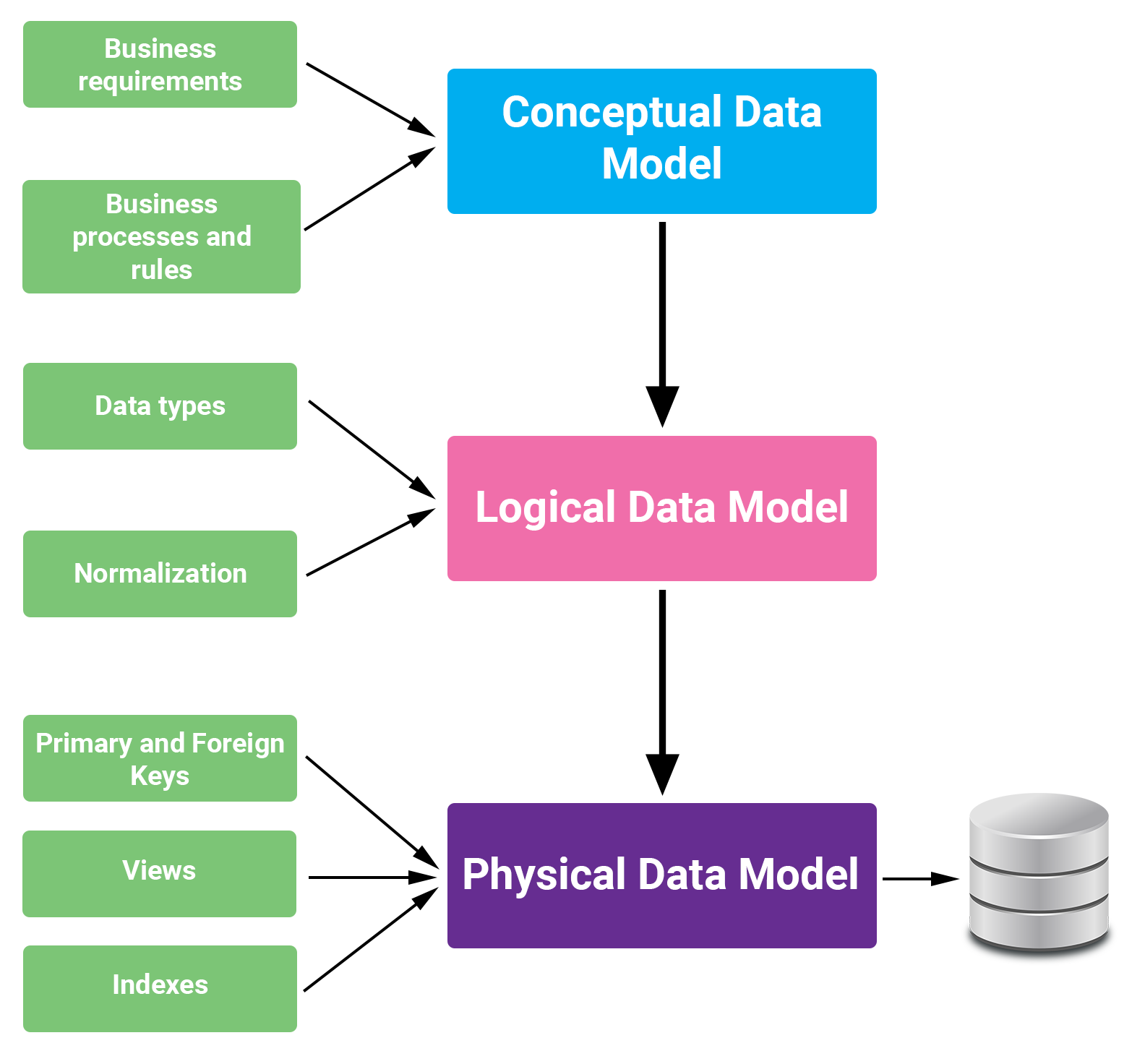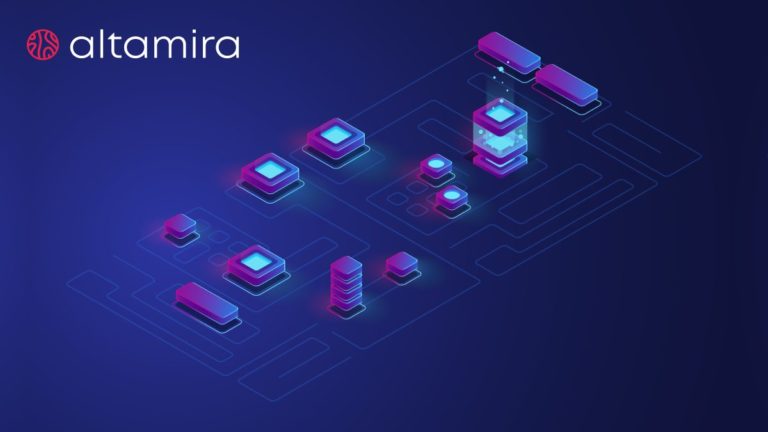Table of Contents
Data is not something abstract, meaning surely you cannot touch it and sometimes monitor all processes it goes through, but it has great value for businesses. Overall, data is the binder to lead the company to complete knowledge and understanding of the value it can receive from data. Data is used in practically all company processes and departments, particularly sales, marketing, delivery, and others.
The used types of data are diverse, but the purpose is single – using this data for further analysis and reporting on the efficient usage of this data and the effectiveness of current business strategies. Exactly, data modeling is tasked with relating the different data sources and pieces of information into a unified system to keep data standardized and structured within the databases.
No data modeling process starts without specifying the business needs and requirements of a certain company, even though this process is primarily technical. Therefore, further, we would like to investigate the meaning and essence of data modeling for businesses and what stages the process commonly includes.
What is data modeling?
Data modeling entails the creation of a visualized version of the data and its parts within the inner business system. The data modeling process is tasked with depicting the data flows, points, and structures, the allowed data formats, and the interaction between different types of data within a single ecosystem.
There are diverse types of data models, and the selection of these models is commonly determined by the ongoing business needs and requirements. This approach provides flexible conditions to change the data models simultaneously with the change in business requirements.
Data modeling is converting complex data into easy-to-understand visualized roadmaps that include all data sources available in your company, the ways data is formatted and structured, and the processes where this data is used. These roadmaps are created using specific tools and diagrams to make the information readable and clear for the stakeholders. Overall data modeling aims to make the data resources structured and managed in order to share it with business partners, software providers, etc.
Phases of data models
Data modeling can be boldly related to the design when the ideas and thoughts are specified and converted into visible documents. Basically, there are three main phases each data model goes through, starting from abstraction to usable items.

Types of data models
These days, businesses of different industries are tasked with processing huge amounts of information with diverse complexities. So the requirements for inner databases and database management systems are growing, introducing new model types. Further, we would like to take a closer look at the common types of data models.
#1 Hierarchical data model
This data model depicts one-to-many connections of data tables and fields. In simple terms, each record within the database which can be called a parent is related to one or several child data tables that open up the record and its meaning. This data model is widely used in various types of software systems and databases, for example, XML and GIS.
#2 Relational data model
The relational data model is mostly applied for financial processes within different business software apps, one of which is POS systems. This data model type is an excellent choice for keeping the data stored and structured where the data fields are connected using tables.
#3 Entity-relationship data model
This type of data model is used by data architects for the purpose of outlining the interactions between different data entities within a database using data mobile diagrams, meaning it is not an abstract concept, it visually shows how the data entities communicate with each other.
#4 Object-oriented data model
The object-oriented data model outlines the abstract concepts of real entities and can be applied to different types of databases. The objects depicted in this data model are placed in the hierarchy and entail connected features.
#5 Dimensional data model
This data model is accountable for allocating data not only for its storage but efficient reporting and search. The data is divided into parent facts and child dimensions which are related to the main fact.
Benefits of data modeling process for your business
As you see, there are different types of data models that go through three main phases, from the abstract concept to physical actions and visualizations. Data modeling aims to simplify the meaning and understanding of the relationship between data entities within company databases. Moreover, the data modeling process provides the following benefits for your business workflows.
Lower coding expenses
Thanks to the application of data modeling, businesses can decrease the budget they commonly spend on coding and testing. Various types of data models help to visualize the data structure with the existing software systems and databases, which also help prevent or define the errors that may occur with no additional investment.
Improved data management
Data modeling integration improves the ways you manage data within the company database.
This process entails the integration of various tools that are accountable for structuring, standardizing, and reporting data in order to provide critical data insights that influence decision-making processes.
Representing storage and databases
Data modeling helps define what data is and what requirements within your inner workflows it has. Thus, collecting, storing, and archiving data within the databases becomes more efficient, so that you and your team can have constant access and an overall picture of the data flows within your company.
Clearly defined data objects
Data modeling implies visualizations of the data flows and structures using different types of data diagrams that represent the interaction of data entities with other database objects.
Increased database performance
Due to the application of data modeling concepts and configurations, the engineering team aims to increase the speed and performance of the database.
Data modeling process
Data modeling is a completely technical process that requires the awareness of the ongoing business needs and requirements, data process, and goals the company sets and is willing to reach with data modeling implementation. Here are the key stages of the data modeling process that awaits your company in the future.
Drawbacks of data modeling
Despite the range of advantages data modeling and its concepts are capable of bringing to your company, there are still certain challenges and pitfalls you need to be prepared for. These are the following:
- Even tiny changes in the data structure entail changing the entire integrated application within your general inner system;
- Physical data characteristics are not always correctly defined, which can prevent integration data modeling;
- Your in-house technical team may lack the skills and knowledge to apply different data models;
- No set manipulation language is available in database management systems.
- The company leadership and stakeholders are not aware of the need and advantages of applying data modeling, which lead to lacking support for the data management teams and data mobile process in general;
- As the data modeling process starts from the concept which is an abstract term, it can be challenging to completely understand the reasons and profits of applying data modeling within your company databases for your staff;
- The business requirements are variable, but they need to be accurately specified before integrating any type of data model, in case these requirements are not clear, this will make the process more complicated.
Future of Data Modeling
Due to the continuous digitization in business spheres, companies keep receiving tremendous amounts of data – that is easily structured as well as unstructured, thus not valuable. And these amounts continue to grow and expand, including any piece of data contained by databases or received from sources and devices like emails, files, knowledge bases, customer information, employee information, reporting, analytics, and so on.
Data modeling plays a crucial role in these processes, as only data modeling can be applied for the determination of valuable data, structuring this data, usage of this data, and accessing and changing this data. So, here are the features and trends that we all can expect in the data modeling process:
- Ability to quickly and efficiently store and structure any amount of data flowing to a certain company; each data source and piece of information it provides will be defined, checked, stored, and structured; overall any data type and format will be able to be structured;
- Data modeling will help specify the valuable information from these amounts which can and need to be accessible for a particular period of time, after which certain pieces of information will be deleted to free the space within the database;
- Data architects will be tasked with designing software systems that will be capable of processing structured and unstructured data.
Wrap up
Being stored within cloud-based databases, data caused the need for modernization of the process of extraction, storing, and organizing data within the data modeling. This process is expected to be modernized to keep with the modern data stacks using the knowledge of data engineers and data analytics.
Data modeling is accountable for improving and modernizing your data analytics processes, decreasing the expense your business may have on data analytics and engineering. Your business requires a data transformation, and the Altamira team knows how to help you acquire this process. A data analytics solution can be smoothly integrated into the existing software system within your inner company processes as a function, or we can build the data analytical solution for your business needs and requirements from scratch.






